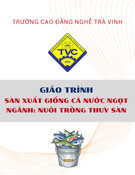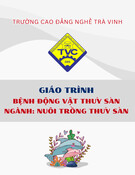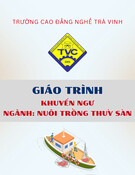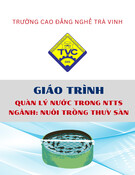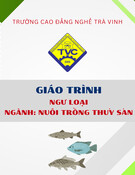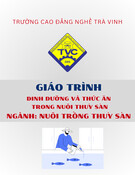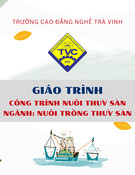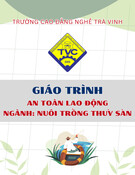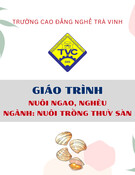
Vietnam Journal
of Agricultural
Sciences
ISSN 2588-1299
VJAS 2020; 3(4): 798-805
https://doi.org/10.31817/vjas.2020.3.4.03
https://vjas.vnua.edu.vn/
798
Received: June 10, 2020
Accepted: October 9, 2020
Correspondence to
dtnhinh@vnua.edu.vn
Effects of Temperature on Population
Growth and Resting Egg Production of
Freshwater Rotifer (Brachionus calyciflorus)
Doan Thi Nhinh, Pham Thi Lam Hong, Truong Dinh Hoai & Kim
Van Van
Faculty of Fishery, Vietnam National University of Agriculture, Hanoi 131000, Vietnam
Abstract
Resting egg production of rotifers provides critical advantages in
larviculture of most fish species due to the reduction in the costs of
labour and algae production. The study was conducted to investigate
the effects of temperature on population growth and resting egg
production of a freshwater rotifer, Brachionus calyciflorus, collected
in Northern Vietnam. The rotifer was pre-cultured at 27ºC before
being transferred to the cultures at 15 and 35ºC while the control was
maintained at 27ºC. One-liter beakers filled with 500mL culture
medium were used with three replicates for each temperature group.
Stock rotifers were inoculated at an initial density of 200 ind ml-1 and
fed with concentrated fresh algae. The results indicated that
population growth rate (r) of rotifers cultured at 27 and 35ºC were
significantly higher than that of rotifers at 15ºC while the highest
density was attained from the treatment of 27ºC, at 608.3 ind mL-1,
compared to 468.3 and 360.5 ind mL-1 at 35 and 15ºC, respectively.
Transferring the cultures from 27 to 35ºC significantly increased the
rate of resting egg carrying females with the maximum rate of 31.5%
compared to 21.2 and 13.5% of the rotifers at 27 and 15ºC,
respectively. The resting egg densities of the cultures at 35ºC were
also significantly higher than those at 15 and 27ºC. The resting egg
carrying females appeared and increased their rates in concurrence
with increases in the population density. The present results are
important information for resting egg induction and production of
rotifer in larviculture.
Keywords
Rotifer, Brachionus calyciflorus, resting egg
Introduction
Rotifer has been widely used in aquaculture as a valuable live
feed for larvae and fry of most fish species. Their small size and
relatively slow movements combined with the features of staying

Doan Thi Nhinh et al. (2020)
https://vjas.vnua.edu.vn/
799
suspended in the water column, rapid population
growth, and high culture density capacity have
contributed to their advantages as ideal prey for
the larvae stage of aquaculture species (Lubzens
et al., 1989). Of which, freshwater rotifers have
been utilized in seed production of high-value
freshwater species such as giant freshwater
prawn (New & Valenti, 2008), loach (Wang et
al., 2009), catfish (Clarias anguillaris) (Arimoro,
2007), and ornamental fish (Lim & Wong, 1997).
More notably, a significant increase in the
survival rates of pangasius catfish fry (Tra, Basa)
has been observed when they were fed with
freshwater rotifer (Vu et al., 2020).
However, during the larviculture period,
rotifers are only required at certain stages (often
at the first feeding stage) while the continuous
maintenance of a rotifer culture is time-
consuming and the availability of rotifer stock
fluctuates due to their dependence on being
collected from ponds or rivers. There is,
therefore, an increased interest in the production
of resting eggs, which are also called cysts,
because they are ideal for long storage and
transport, and they can then be used as inoculum
for mass culture (Dhert et al., 1997). The
utilization of large numbers of resting eggs as
inoculum for mass culture considerably reduces
labour costs and algae production costs for
upscaling the stock culture. The use of rotifer
resting eggs is also highly recommended to
prevent contamination from disease pathogens in
the live food pathways. Resting eggs can tolerate
a short exposure to disinfectants such as NaOCl
and saltwater, and can be simply treated before
hatching to ensure the start cultures are free from
bacteria and ciliates (Fengqi, 1996).
Under the impacts of certain environmental
factors, including changes in water quality
parameters, population density, food availability,
and endogenous clues, the life cycle of rotifers
undergoes sexual reproduction with the
appearance of mictic females (Gilbert, 2003;
Stelzer & Snell, 2003). If not fertilized within a
few hours of hatching, mictic females will
produce haploid male eggs. If fertilized by a
male, the mictic females will produce diploid
resting eggs which are carried on the females
(resting eggs bear females) (Yin et al., 2016;
Snell et al., 2019). Resting eggs with a thick wall,
are released by their mothers into the water
column and fall to the sediment of water bodies
(García-Roger et al., 2006). They are highly
resistant and can remain vital for a long time in
adverse environmental conditions (Segers &
Chittapun, 2001). In practical conditions, to
induce and produce resting eggs of rotifer, multi-
stressors are often applied. Although resting egg
production of saltwater rotifer (B. plicatilis) has
been reported in detail, the related works on
freshwater rotifer are limited. In Vietnam, no
research has been done on the induction of
resting eggs of freshwater rotifer (B.
calyciflorus) so far, despite its increasing role in
larviculture. Xi et al. (2004) reported the
significant influences of both temperature and
strain, independently and in interaction, on
resting egg production of B. calyciflorus. The
present research, therefore, aims to induce and
produce resting eggs of B. calyciflorus with a
strain collected in Northern Vietnam through the
manipulation of culture temperatures.
Materials and Methods
Source of rotifer
A zooplankton net with a mesh size of 70µm
was used to collect the upper sediment layer from
outdoor fish tanks in the Northern part of
Vietnam. The large particles in the collected
sediment were removed using meshes sized from
200-500µm. Resting eggs of rotifers were then
separated using a mesh size of 100µm and were
checked under a microscope for further manual
isolation if necessary.
Resting eggs at the size of 100x160µm
(width x height) were black in color and had a
black ring around the extra-embryonic space as
mentioned by Hagiwara (1995), which
differentiates them from amitic eggs (Figure 1).
The eggs were stored in 4ºC and dark
conditions for 2 months and hatched after being
incubated at 27ºC and D:L 0:24 conditions for
24h. The rotifer stock was then upscale cultured
at 27ºC in 20L buckets and fed with condensed
freshwater microalgae, Chlorella vulgaris. No

Effects of temperature on population growth and resting eggs production of freshwater rotifer
800
Vietnam Journal of Agricultural Sciences
Figure 1. Resting egg of rotifer collected in sediment of fish tanks (a) and an amitic egg (b)
appearance of resting eggs was shown under
these culture conditions.
Experimental design
After the pre-culture period at 27ºC, stock
rotifers were transferred to the treatment groups
at 15 and 35ºC, while the control group was kept
at 27ºC. One-litre plastic beakers filled with
500mL culture medium were used to culture the
rotifers in the experiment with 3 replications for
each temperature treatment. For the treatment at
35ºC, the beakers were placed in a water bath and
an electric heater was used to control the
temperature. The 27ºC beakers were arranged in
an air-conditioned room which was set at 27ºC
while the beakers of the 15ºC treatment were
placed in a transparent cool refrigerator. All of
the treatments were provided with the same light
source to reach a light density around 2000 lux
and a L:D 18:6 regime.
The rotifers were inoculated at the initial
density of 200 ind mL-1 into the experimental
beakers after an acclimation period of one day to
each of the tested temperatures. Weak aeration
was applied in all of the culture beakers
throughout the experiment period. The rotifers
were fed twice daily with condensed
fresh Chlorella vulgaris at densities from 2 to 5
x 106 cells mL-1. By the time of feeding, 10-20%
of the culture volume was exchanged daily.
The number of rotifers was counted once
daily. A 1ml sample of the culture medium was
collected from each culture beaker after
increasing aeration for well-mixing of the rotifers
in the water column. The samples were inspected
and counted daily under microscopes for the total
number of rotifers and number of resting egg-
bearing females, while the resting egg density
was counted on the last day of the experiment.
Each culture beaker was sampled 3 times for
mean values. The population growth rate (r) of
the rotifers was calculated as follows:
r = (LnNT-LnN0)/T
where, T is the culture day in which the
rotifer density was the highest, and N0 and NT are
the initial and highest rotifer densities,
respectively (Hagiwara & Hino, 1988). The
percentage of resting egg-bearing females w
calculated as follows:
Number of resting egg-bearing
females/total number of rotifers counted *100%.
The data of the population growth rate, the
maximum density of rotifers, the rate of resting
egg-bearing females, and resting egg density
were subjected to one-way analysis of variance
(ANOVA) and if significant (P< 0.05)
differences were found, Tukey’s post-hoc test
was used to rank the groups in SPSS version 16.
Results and Discussion
Population growth
Population growth of the rotifers was higher
at high temperatures. The maximum density of
the rotifers cultured at 15ºC reached 360.5 ind
mL-1, significantly lower than those of rotifers
kept at 27ºC or exposed to 35ºC (P< 0.01). The
two later values also significantly differed from
each other (P< 0.01) with the lower maximum
density belonging to the rotifers exposed to 35ºC,
468.3 ind mL-1, compared to 608.3 ind mL-1 for
50µm
(a)
(b)

Doan Thi Nhinh et al. (2020)
https://vjas.vnua.edu.vn/
801
the rotifers cultured at 27ºC. The population
growth rate (r-value) of the rotifers shifted to
culture at 15ºC was 0.282 and significantly lower
(P< 0.01) than those of the rotifers cultured at 27
and 35ºC, which reached 0.416 and 0.447,
respectively (Table 1).
The rotifer population growth curves
showed different trends (Figure 2). The
population density of rotifers cultured at 35ºC
increased dramatically from day 2 and reached
the highest point on day 5, followed by a rapid
reduction period, and no rotifer survived after
day 7 of culture. A similar trend of population
growth was also observed for the rotifers kept at
27ºC, although, the maximum density peaked on
day 6 (648.3 ind mL-1) and decreased to 144 ind
mL-1 on day 10. The changes in population
density of the rotifers exposed to 15ºC differed
from the two others with a slow increase during
the first 7 days of culture, a slight reduction
during days 7-10, and a high density of 246 ind
mL-1 on the last day (day 10).
Temperature is one critical parameter
affecting the biological and growth variables of a
species in different ways including thermal
optimal ranges and thresholds of a specific strain.
Lavens & Sorgeloos (1996) reported the
temperature tolerance of B. calyciflorus was
between 15 and 35ºC. However, the rotifer strain
used in the present study survived and
reproduced well at these two temperatures. The
optimal temperature for a high population
density and growth rate in the present study was
27ºC, in agreement with previous studies that
reported the optimal temperature for population
Table 1. Population growth of rotifers cultured at 15, 27, and 35ºC
Temperature (°C)
Days of maximum
population density
Maximum population density
(ind mL-1)
Population growth rate (r)
15
7
360.5a ± 22.3
0.282a ± 0.011
27
6
608.3c ± 37.4
0.416b ± 0.012
35
5
468.3b ± 28.7
0.447b ± 0.014
Tukey’s test
***
***
Note: Values followed by different letters in each treatment column are significantly different at the 5% level by Tukey’s test. ***
denotes the significance level of 1%.
Figure 2. Population growth curves expressed by population density of rotifers cultured at 15, 27, and 35ºC. The data are shown as
mean ± standard error (SE),
0
100
200
300
400
500
600
700
800
0 1 2 3 4 5 6 7 8 9 10
Rotifer density (ind.ml-1)
Days of culture
15°C 27°C 35°C

Effects of temperature on population growth and resting eggs production of freshwater rotifer
802
Vietnam Journal of Agricultural Sciences
growth of B. calyciflorus was around 25-29ºC
(Awaïss & Kestemont, 1992; Park et al., 2001;
Anitha et al., 2016). At high temperatures, the
rapid increase in population growth can
compromise water quality and inhibit further
growth of the population (Ogello et al., 2016).
This may be also the reason for the rapid
decreases in the population densities of the
higher temperature groups at the later culture
stages in the present study.
An increase in the population growth rate as
the water temperature increased was observed
due to the shorter time required for the embryo
and post-embryo to develop at a higher
temperature (Awaïss & Kestemont, 1992). At
high temperatures, the metabolic activities of
rotifer are high, the lifespan shortens, and the
number of rotifer eggs and juveniles released per
day increases due to the reduction in the interval
between each egg-laying (Awaïss & Kestemont,
1992; Yona, 2018).
Production of resting eggs
Resting egg-bearing females appeared and
the rates increased in all of the treatments as the
population density increased but were different
among the temperature groups (Table 2, Figures
3 and 4). On the first day of the experiment, no
resting egg-bearing females were observed in
any of the temperature treatments. The earliest
appearance of resting egg females was detected
at 35ºC after one day of the experiment and the
rate increased most dramatically to the maximum
value of 31.3% on day 5, significantly higher (P<
0.01) than those of rotifers kept at 27ºC or
exposed to 15ºC. The exposure of rotifers to 15ºC
produced resting egg-bearing females on day 3
and the maximum rate reached 13.5% on day 8,
while rotifers kept at 27ºC obtained the
maximum rate of resting egg-bearing females on
day 7.
The density of the resting eggs at the end of
the experiment significantly differed (P< 0.01)
among the treatments, with the highest density
reaching 98.3 eggs mL-1 in the 35ºC treatment,
followed by those in the 27 and 15ºC treatments
with 64.6 and 45.5 eggs mL-1, respectively.
Resting egg females typically are found
during periods of rapid population growth or
high population densities (Carmona et al., 1995;
Schröder, 2001). The same trends were also
observed in the present study with the appearance
and increasing rates of resting egg females as the
population density increased. The crowding
condition was believed to assure a high
probability of encounters between males and
mictic females, and that guaranteed the
Figure 3. Resting egg females produced in the experiment
Resting egg
bearing
Amitic females

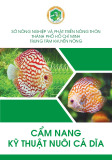

![Kỹ thuật nuôi thâm canh cá lóc trong ao đất: Tài liệu [chuẩn/mới nhất]](https://cdn.tailieu.vn/images/document/thumbnail/2025/20250724/kimphuong1001/135x160/3731753342195.jpg)



![Kỹ thuật nuôi cá nâu trong ao đất: Tài liệu [Mới nhất]](https://cdn.tailieu.vn/images/document/thumbnail/2025/20250723/vijiraiya/135x160/29781753257641.jpg)
![Kỹ thuật nuôi cá mú trong ao đất: Tài liệu [Mới nhất]](https://cdn.tailieu.vn/images/document/thumbnail/2025/20250723/vijiraiya/135x160/85681753257642.jpg)

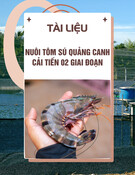
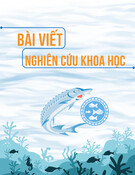
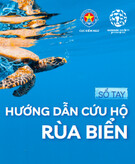
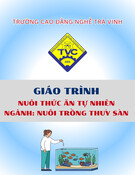
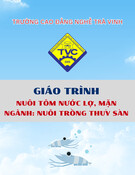
![Giáo trình Sản xuất giống tôm nước lợ, mặn (Trung cấp/Cao đẳng) - Trường Cao đẳng nghề Trà Vinh [Mới nhất]](https://cdn.tailieu.vn/images/document/thumbnail/2025/20251115/kimphuong1001/135x160/76031763179346.jpg)

